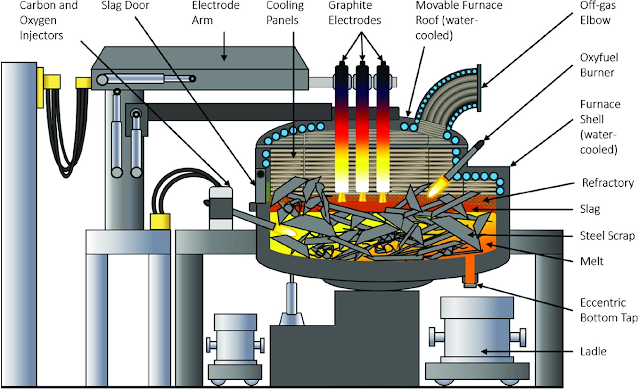Ferroalloy Production Cost Composition
Ferroalloys are mainly produced by electric furnaces, which require high power consumption and abundant and cheap power resources. France became the main producer of ferroalloys in the early stage, and Norway became the largest exporter of ferroalloys in the 1980s and 1990s, based on the rich local hydropower resources.
The production of ferroalloys is an energy-intensive process, and energy accounts for a large proportion of the cost structure of ferroalloys.
As far as the main varieties of ferroalloys, manganese, chromium, and silicon are concerned, in addition to abundant China domestic resources and low prices of silica, about one-third of manganese ore needs to be imported due to factors such as low domestic grade, high mining cost, and reserves.
The proportion of manganese alloy production cost is relatively large; China's chrome ore resources are extremely scarce, basically, all rely on imports, and chrome ore occupies a relatively large proportion of the cost structure of ferrochrome.
The production cost of ferromanganese alloy is mainly composed of manganese ore, electricity, and coke procurement costs, of which manganese ore costs account for about 60%, electricity costs account for about 20%-25%, and coke costs account for about 10%-15%.
In addition, when many enterprises produce manganese ferroalloys, in addition to using domestic low-phosphorus, low-iron, low-sulfur, and low-silicon manganese ores, in order to improve the grade of raw materials, increase the recovery rate of manganese, reduce power consumption and production The cost needs to be smelted after purchasing part of the imported ore and mixing the domestic ore.
Therefore, fluctuations in the price of manganese ore, electricity, and coke have a greater impact on the production of ferromanganese alloys.
Similar to ferromanganese alloy, chrome ore also accounts for a large proportion of the production cost of ferrochrome. China's chrome ore resources are very few.
In 2013, chrome ore consumption was nearly 14 million tons, and China’s supply was only about 2 million tons.
The rest was settled by imports. The cost of chromium ore accounts for about 60% of the production cost of ferrochrome in China, the cost of electricity accounts for about 25%-30%, and the cost of coke accounts for about 10%-15%.
Due to the low price of silica, the proportion of energy consumption in the production of ferrosilicon is the largest. Production of one ton of ferrosilicon raw materials and power consumption are 1780-1850 kg of silica, 890-930 kg of coke, 220-230 kg of steel shavings, 45-55 kg of electrode paste, and 8400-9000 kWh/t of electricity. In the cost of ferrosilicon, electricity accounts for about 70%.
Hani Metallurgy is the one-stop supplier able to design, manufacture, install and commission your melt shop and hot rolling mill plant from A to Z.



.jpg)








没有评论:
发表评论